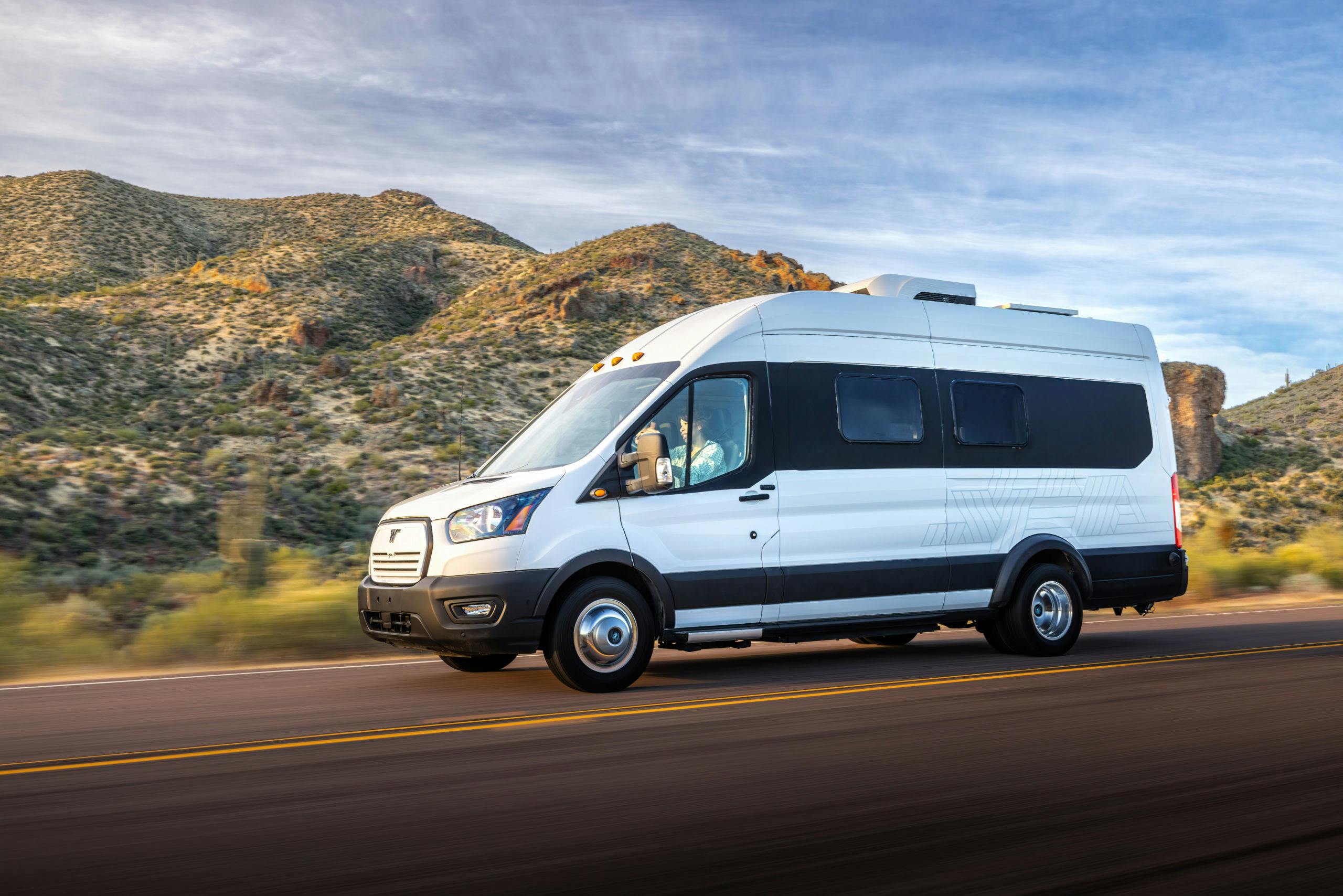Winnebago Industries revealed the first concept for an all-electric, zero-emissions motor home from a major RV maker. Called the Winnebago e-RV, this project was under development for over two years by the company’s Advanced Technology Group and is a fully functional vehicle that aims to redefined efficiency, comfort, and functionality.
“This is an exciting time for Winnebago Industries and the outdoor lifestyle industry as a whole,” said Michael Happe, President, and CEO of Winnebago Industries. We are proud to continue our innovation legacy with the reveal of the e-RV concept vehicle.” The Winnebago e-RV features a battery-electric powertrain that also powers all the living systems of the coach. Include are in-vehicle appliances aligned for optimal energy use and battery performance without sacrificing comfort levels. There’s also a 350-volt DC power outlet for the water heater, a roof-mounted air conditioner with a heat pump, and a 110-volt AC outlet for the induction stove and refrigerator. Some of the appliances in the e-RV can also operate on 12-volt DC power to improve flexibility.
The e-RV can charge at home, on dedicated charging stations, and campgrounds. Using a DC charger or other high-current chargers, Winnebago says the e-RV can fully charge in 45 minutes. Fast-evolving battery technology is expected to go into the final vehicle as the company continues to develop this concept. That should improve the e-RV’s capabilities and give it a longer driving range. Currently, it uses an 86-kWh battery pack that allows it to travel up to 125 miles per charge. Winnebago notes that this meets the needs of around 54 percent of new RV buyers who make trips under 200 miles. The e-RV also gets an integrated control system that enables the operation of subsystems and optimizes load and efficiency. It also displays system information on the digital gauge cluster and can be monitored via an app for your mobile device.
To keep the e-RV connected, it gets a residential-grade Wi-Fi network through a dual-modem router for high-data streaming levels. Appliances include a marine-grade refrigerator, a slide-out inductive stove, and a matte black sink. The bathroom also includes a toilet and a handheld showerhead that you can detach. Materials used throughout the cabin are eco-friendly and sustainable. This includes the use of woolen appliqués for improved thermal and wall insulation, and recycled cork flooring.
“Consumer demand is driving electric power applications across many fronts, and we believe RV consumers are poised to benefit from the enhanced features and usability that electrified and connected RV products will provide,” said Ashis Bhattacharya, Senior Vice President, Business Development, Advanced Technology, and Enterprise Marketing of Winnebago Industries. “Winnebago Industries has an ongoing mission to listen to and learn from our customers as we continue refining, exploring, and innovating, and the e-RV concept vehicle is a perfect example of this.”
The chassis of the Winnebago e-RV is based on the Ford Transit. However, it’s been modified with an electrical power system sourced from Lightning e Motors. This unit powers the drivetrain, vehicle controls, and living quarters. There’s also an all-electric version of the Transit called the e-Transit with a driving range of 126 miles and a single rear-mounted electric motor making 266 hp and 317 lb-ft of torque. However, its battery is a smaller 67-kWh battery. Based on the photos, the all-electric e-RV appears to be based on a high-roof variant of the Ford Transit.

